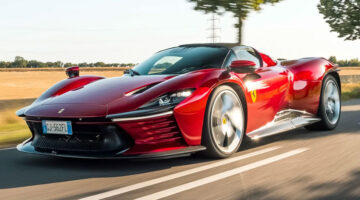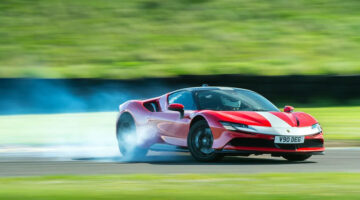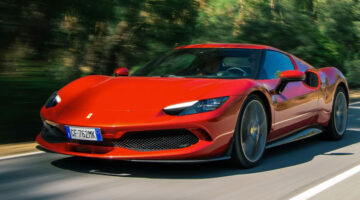Ferrari’s California eventually became a decent driver’s car but it was never a beauty. Its replacement, however, ticks just about every box there is.
| Engine | Power | Torque | 0-100kph | Top speed | Weight | Price |
|---|---|---|---|---|---|---|
| V8, 3855cc, twin-turbo | 591bhp @ 7500rpm | 560lb ft @ 3000-5250rpm | 3.5sec (claimed) | 320kph (claimed) | 1664kg (361bhp/ton) | $215,000 |
As a replacement for the ten-year-old California, which became the California T in 2014, the 320kph, $215,000 Portofino is the most usable Ferrari money can buy, says Ferrari. So although it’s not the most dramatic car made in Maranello right now, it is the most practical, boasting more rear seat space than the California, a bigger boot, more equipment, more performance, a new chassis and a redesigned cabin. The Portofino therefore, claims the factory, is a Ferrari you can drive 365 days a year.
Thanks to an extensive weight-saving regime that includes everything from a lighter V8 engine to seat frames fashioned from magnesium, it’s also lighter than the California T by an impressive 80kg. Up front, there’s a development of the electric power-steering system first used in the 812 Superfast, plus a third-generation electronic differential – whereas the California T made do with a more conventional, less effective (says Ferrari) mechanical diff.
The Portofino’s engine is a thoroughly revised version of the California T’s 3.9-litre, twin-turbo, 90-degree V8. It produces 591bhp at 7500rpm and 560lb ft of torque between 3000 and 5250rpm, and emits ‘just’ 245g/km. Thanks to a launch-control system it can hit 100kph from rest in a mere 3.5 seconds. Zero to 200kph takes 10.8 seconds, so although it’s a usable Ferrari, it’s also an extremely rapid one.
As with all Ferraris nowadays, the gearbox is dual-clutch – this one with seven forward ratios – and paddles that are fixed behind the wheel, i.e. they don’t move with the steering wheel. Shift speeds are faster and smoother than before, says Ferrari, depending on where you set the three-stage manettino switch.
The Portofino’s engine and raw performance are undeniably impressive on paper, but it’s actually the chassis, steering and suspension that have come in for the biggest rethink – mainly in an attempt to make the car as capable as possible on the move, but also as easy to drive at the same time, so says Ferrari. One does not, for instance, require the same skill set to drive the Portofino quickly compared with the rest of the range, says the factory.
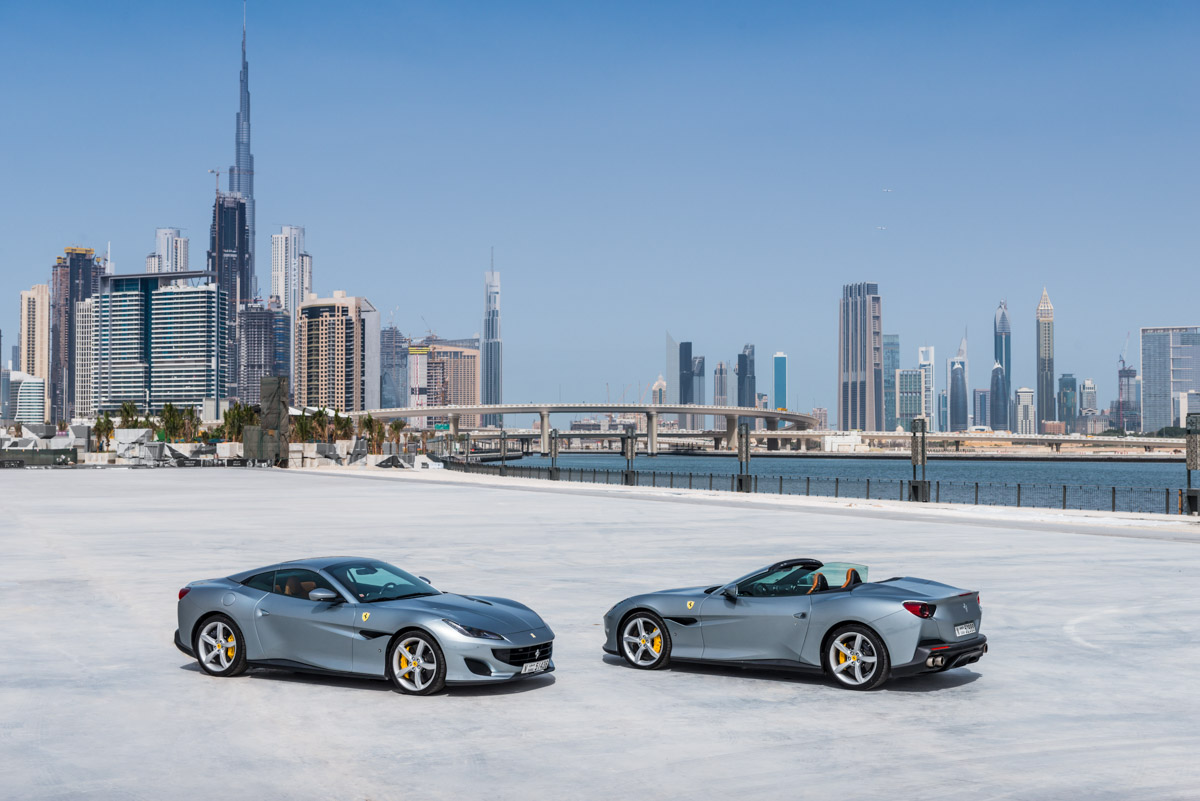
As such, the manettino is simplified to contain just three settings; comfort, sport and ESC off. The new electronic diff generates much more traction than before, that much becomes clear the very first time you summon full throttle in a low gear, at which point the Portofino squats ever so slightly and just goes. But the diff also aids stability at all speeds, claim the engineers, while the electric power-steering system has been set up to be as precise as is normal in a Ferrari but also lighter in feel and, thus, more manageable every day (in theory).
The dampers are also electronic and change in calibration depending on where you set the manettino. However, you can also select Ferrari’s now common – and highly effective – bumpy road setting, no matter where the manettino is set. This then puts the dampers in a more comfortable setting while keeping the more urgent responses from the drivetrain, even when Sport or ESC off are selected. Which is a useful addition.
The 20-inch Pirelli P Zero tyres are bespoke to the Portofino but don’t feature a Corsa compound or tread. The Portofino isn’t that kind of car, says Ferrari, even though its kerb weight is an impressive 1664kg including fluids, making it not THAT much heavier – or slower – than a 488 GTB.
First impressions when you climb aboard, drop the hood and press the magic red button that ignites the engine are all good, all excellent, in fact. The roof glides into the rear bodywork in near silence in just 14 seconds, and the new seats feel great beneath your backside, providing a ton of support in all the right places without feeling like they’d be uncomfortable on a long journey. And the new cabin design is genuinely stunning. There’s a huge sense of quality to the interior, yet the controls feel and look intuitive. You feel deeply impressed, but not baffled. To begin with, then, the Portofino hits all the right buttons.
It’s also very quick, you soon discover, once you get moving and find a road that’s long and quiet enough on which to let rip. There’s almost no lag from the twin-turbo V8 engine and, therefore, instant response when you deploy the throttle. And it sounds pretty spectacular at full beans, too, with an engaging rasp from the V8 to accompany the onslaught of acceleration. Plus, the dual-clutch gearbox works an absolute treat in both directions, and seemingly in any of the manettino settings.
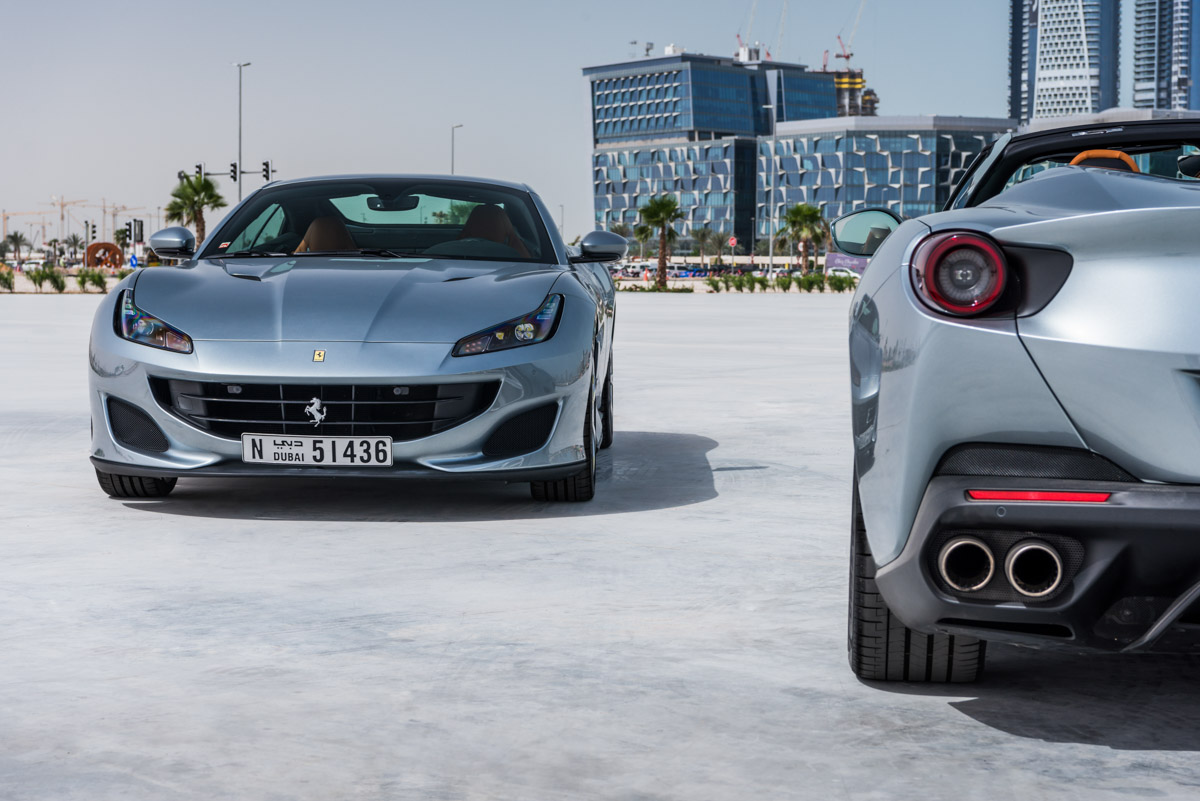
Yet overall there’s something curiously lacking in the Portofino’s dynamic repertoire. The steering, in particular, feels too light in any of its settings, and is therefore too distant in both its feel and response. At the same time there’s a strange absence of feel beneath your backside when you aim it towards a corner, as well.
You can feel the electronics doing their thing pretty much all the time on the move, providing the car with a surprisingly decent ride quality, eradicating kickback through the steering over rough roads, and keeping the body eerily flat even through quick corners taken at proper speeds.
But at the same time the suspension feels over-digitised in the way it reacts to whatever the tyres encounter, be that in a straight line or when cornering. Throw the Portofino hard into a bend, for example, and the absence of body roll is impressive in one way, yes, but also weirdly unnatural in another. And the fact that the steering also remains ultra-light at all times doesn’t help much, either, even though the fundamental grip levels on offer are impressive. It makes it feel a little bit like you are playing a computer game, rather than driving an actual car.
It’s all a bit too easy ultimately, as a result of which the depth of absolute satisfaction – the sort you get from a 488 every second of every journey – is shallower than I, personally, would like. Ferrari says this is exactly how the Portofino should be perceived because it’s a car you can use every day. But I’m not totally convinced, even if there is more room in the rear, much more efficient air con and a retractable hard-top that is quite brilliantly engineered.
The brake pedal on the test car also had far too much travel in it for my liking, so even though the outright stopping power was excellent, feel through the pedal was not.
Conclusion; even from an every-day Ferrari there should surely be a bit more touchy-feely stuff going on beneath your hands and backside to make the picture complete? If there was, the Portofino would be another genuinely great car from Ferrari because so much else about it is so excellent. But as it stands it’s an extremely capable Ferrari, but not a great one. Whereas the similarly priced Aston Martin Volante, IS a truly great Aston Martin. And it’s the better of the two cars as a result.


